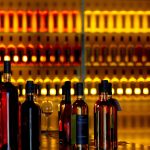Controlled Environment For Laboratories: Why Is This A Necessity?
Controlled Environment For Laboratories: Why Is This A Necessity?
- 06 October 2015
Thousands of customers consider cooling solutions everyday. They entertain catering-centric thoughts, wondering how effectively a commodity can be cooled or frozen so that it’s extra-fresh when it reaches the kitchen. What some patrons in the cooling industry tend to overlook is that there are other industries, applications where food storage protocols bow to the need for a controlled environment. More than a fast freezing agent, better than a uniformly cooled catering chamber, these high-end solutions deliver sealed controlled environment products, mechanisms that can generate nth degree temperature mastery. But why do we need this painstaking environmental dominance? To unravel the answer, we have to take a closer look at a laboratory.
A lab in a hospital or any scientific installation is defined by its clinical surroundings. A sterile backdrop is a must, as is the separation of the environment from outside influences. Temperature changes, apart from those initiated by lab personnel, simply cannot be afforded in this scenario. Imagine all the diagnostic samples and bacterial cultures in this room. These biological materials are hugely susceptible to the smallest change in temperature. A small environmentally maintained cabinet will remove this chaotic factor from the scene, leaving the samples to grow at a consistent rate as determined by research scientists and laboratory staff. In other words, dominion over one of the most influential factors in an experimental setting has been handed over to the lab staff, leaving this highly qualified medical expert to either maintain the environment or intelligently alter applied heat so as to change the experimental variables at the touch of a dial.
Thus far we’ve talked about the alteration of temperature, the cooling of a special cabinet or walk-in chamber full of samples and pharmaceuticals, but some of these biological materials require even greater care. Airflow settings have to be managed. The humidity of the enclosed space is equally evaluated, leading to the requirement for an advanced monitoring system. It’s simply not enough to push a button, twist a dial, and hope for the right controlled environment in this carefully managed scenario. Some form of electronic monitoring samples humidity and checks temperature, returning these values to on a digital readout and thus insuring the validity of the clinical setting.
Finally, it’s a tad ironic but these laboratory environments also have a direct influence on food, although this is edible material as held in a controlled framework. New foodstuffs are evaluated for content everyday within these laboratories and regulated according to governmental bodies, such as the FDA (America) and the TGA (Australia)
Mark Connelly
C&M Coolroom Services
E-mail : markconnelly@cmcoolrooms.com.au
Mobile: 0412 536 315


